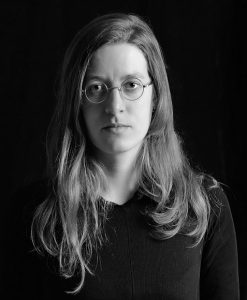Interactions: Zala Lenarcic
Published in Physics
Can you briefly explain the results for which you got the award?
 The working principle of our suggestion is as elementary as that of a greenhouse. In a greenhouse weak sunlight compensates the energy losses though the windows, leading to a temperature of the interior which is much higher than of the exterior. Similarly, weak driving can activate approximate conservation laws of quantum systems. As an example we studied many-body localized (MBL) systems, characterized by macroscopically many local conservation laws. When isolated from the environment, such systems can exhibit localization up to arbitrary energies. However, due to the presence of phonons MBL does not occur in disordered solids, even if disorder is strong. Our work shows that weak driving can reactivate localization, since it pumps into the local conservation laws and compensates their decay due to coupling to phonons. We propose that MBL can be detected via measurements of local temperatures. The variation of local temperatures serves as a new, experimentally relevant, order parameter of the MBL phase.
The working principle of our suggestion is as elementary as that of a greenhouse. In a greenhouse weak sunlight compensates the energy losses though the windows, leading to a temperature of the interior which is much higher than of the exterior. Similarly, weak driving can activate approximate conservation laws of quantum systems. As an example we studied many-body localized (MBL) systems, characterized by macroscopically many local conservation laws. When isolated from the environment, such systems can exhibit localization up to arbitrary energies. However, due to the presence of phonons MBL does not occur in disordered solids, even if disorder is strong. Our work shows that weak driving can reactivate localization, since it pumps into the local conservation laws and compensates their decay due to coupling to phonons. We propose that MBL can be detected via measurements of local temperatures. The variation of local temperatures serves as a new, experimentally relevant, order parameter of the MBL phase.
What do you hope will be the impact of your research?
Our theory promotes the MBL and integrable systems beyond a pure theoretical discourse of idealized systems. It suggests that in the presence of driving their features are much more robust against seemingly detrimental perturbations. The impact of our work would be increased by an actual experimental confirmation, showing that MBL can indeed survive finite coupling to phonons. A possible application would be tunable properties of certain disordered materials, whose transport would be inhibited by a weak driving. Even higher impact could come from experiments confirming our related study, which suggests that in certain spin chain materials driving can activate spin and heat currents as these are the conservation laws of the XXZ Heisenberg model. That would open the venue for new types of spin and heat pumps.
What made you want to be a physicist in the first place?
As a child I dreamed of being an astronaut. After having learned some math I realized one does not need to travel to the space; nature can be explored also in much more abstract ways. My fascination from the first classes of physics continues to this day.
If you weren’t a physicist, what would you like to be (and why)?
A puppet designer. Puppetry, as an artistic medium, is to certain extend free from the limitations of reality, allowing for creative rethinking. I would be the master of aesthetics, creating beauty with my hand and ideas.
What would be your physics superpower?
Ultra-long coherence of my mind.
Which historical figure would you most like to have dinner with — and why?
Mileva Marić Einstein. I would like to ask her how was it to be a female student at ETH in her time, why she decided to live with a genius and how did she accept her numerous pregnancies at her stage of career. I would like to know how much of her work was never acknowledged. I would like to give her a voice.


Please sign in or register for FREE
If you are a registered user on Research Communities by Springer Nature, please sign in